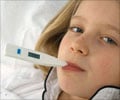Asking patients with focal epilepsy how often they have seizures does not appear to provide an accurate count
Asking patients with focal epilepsy (also known as partial seizures, which usually involve focal areas of the body and altered consciousness) how often they have seizures does not appear to provide an accurate count, according to a report in the November issue of Archives of Neurology, one of the JAMA/Archives journals. Reminding patients to record their seizures in a diary may not help, because patients may be unaware of some seizures.
“Seizures are the main symptom of epilepsy and the major target of its treatment,” the authors write as background information in the article. “Accordingly, seizure frequency is the primary outcome measure for individual treatment and for clinical trials.”Seizures can be detected objectively using video-electroencephalographic (EEG) monitoring; however, because this method is expensive, it is used only in certain patients for short time periods. Physicians most often ask patients to maintain seizure diaries.
Christian Hoppe, Ph.D., and colleagues at the University of Bonn Medical Centre, Bonn, Germany, studied 91 consecutive adult patients with focal epilepsy who were admitted to a video-EEG monitoring unit between Oct. 1, 2004, and July 31, 2005. The patients were outfitted with electrodes and monitored by video for an average of 4.5 days.
All were asked to keep a seizure diary and to push a warning button summoning a nurse when they felt a seizure coming. About half (42) were randomly assigned to receive daily reminders about documenting all seizures during the monitoring period. Patients with generalized epilepsy or a history of pseudoseizures were excluded from the study.
Patients experienced a total of 582 partial seizures during monitoring but did not report 323 of them. Patients’ level of consciousness before the seizure appeared to affect their reporting rate—85.8 percent of all seizures that occurred during sleep were unreported, compared with 32 percent of seizures that occurred when patients were awake. Of the seizures recorded by video-EEG, 43.6 percent occurred during sleep, while only 13.9 percent of seizures reported by patients occurred during sleep.
“Patients activated the push-button alarm ahead of 51 seizures (8.8 percent) but failed to document 17 (33.3 percent) of these seizures,” the authors write.
“The accuracy of seizure documentation was not correlated with neuropsychological performance, including verbal or non-verbal memory, verbal fluency and intelligence level, nor was it correlated with academic achievement,” the authors write. “However, in a group comparison, perfect seizure documenters had better verbal memory performance and higher school education than did non-perfect documenters.” Patients who were reminded to report seizures did not document them at a higher rate than patients who were not.
Source-Eurekalert
LIN/P
 MEDINDIA
MEDINDIA
 Email
Email









